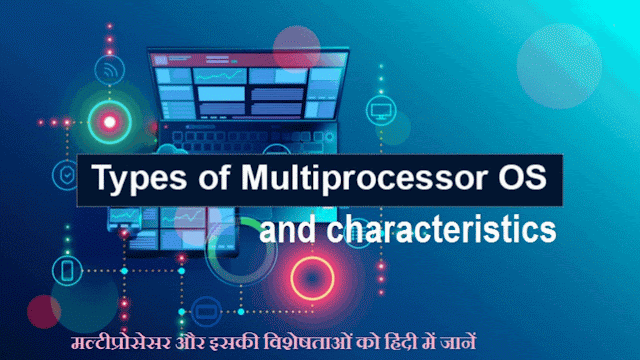What is multiprocessor?
- A computer with multiple processors integrated into it is called a multiprocessor. The processors in a multiprocessor system may be able to communicate and work together at different stages of problem solving.
- A multiprocessor system is made up of two or more CPUs. It's a system that links memory and I/O devices to two or more CPUs. A multiprocessor's input-output processor (IOP) or central processing unit (CPU) can both be referred to as "processors."
- On the other hand, a system with a single CPU and one or more lOPs is typically not classified as multiprocessor unless the IOP has computing power equivalent to that of a CPU.
- Most people think of a multiprocessor system as having multiple CPUs plus one or more lOPs for good measure. As previously mentioned, multiprocessor systems are classified as MIMD (multiple instruction streams, multiple data stream) systems.
Types of Multiprocessors
The following are the types of multiprocessors.
- Symmetric Multiprocessors
- In these systems, every CPU connects to the others and runs a comparable version of the operating system. Since all of the processors are peer-to-peer, there is no master-slave relationship among them.
- Symmetric multiprocessing Unix for the Multimax Computer is called Encore.
- Asymmetric Multiprocessors
- Every CPU in an asymmetric system is assigned a certain duty. All instructions to the other processors are sent by a master processor. The relationship in an asymmetric multiprocessor system is master-slave.
- Before symmetric multiprocessors were developed, there was only one kind of multiprocessor available: asymmetric multiprocessors. Right now, this is also the less expensive option.
Multiprocessor Systems' Benefits
The potential benefits of multiprocessor systems are listed below.
- More reliable Systems:- In a multiprocessor system, the system won't stop working even if one processor fails. Graceful degradation is the capacity to function without interruption even in the event of hardware failure. In a multiprocessor system, the four processors that remain operational take over if one of the five processors fails. Consequently, the machine slows down instead of stopping entirely.
- Increasing Throughout:- When several processors collaborate, the system's throughput rises, meaning more processes are completed in a given amount of time. For every N processors, the throughput rises by a factor of N.
- More Economic Systems:- Multiprocessor systems are less expensive over time than single-processor systems because they share peripherals, power supplies, data storage, and other resources. It is better to schedule many processes on multiprocessor systems with shared data rather than on separate computers with distinct versions of the same data if several processes share it.
Characteristics of Multiprocessor
Parallel Computing:-
- This calls for the use of several processors at once. These processors are designed to perform a common task using a single architecture.
- Processors are typically the same and cooperate in a way that gives consumers the impression that they are the only users in the system. In actuality, though, a large number of people are actually using the system at once.
Distributed Computing:-
- This calls for the use of a processor network. Every processor in this network is capable of handling problems and can be viewed as a standalone computer.
- These processors are diverse, and they are often assigned to a single task.
Supercomputing:-
- Using the quickest computers possible, large and computationally challenging problems are solved in this way.
- Vector computers were used in supercomputing machines in the past, although most people now embrace parallel or vector computing.
Pipelining:-
- This approach breaks down a given task into multiple smaller tasks that need to be completed in a certain order.
- The functional units support the completion of every subtask. Each unit functions simultaneously and is connected serially.
Vector Computing:-
- It makes use of vector processors, which break up operations like "multiplication" into numerous steps and apply them to a stream of operands, or "vectors."
Tags:
asmita
astitva
b2acypher
Distributed Computing
mskuthar
Multiprocessor and its Characteristics
Parallel Computing
Pipelining
Vector Computing


